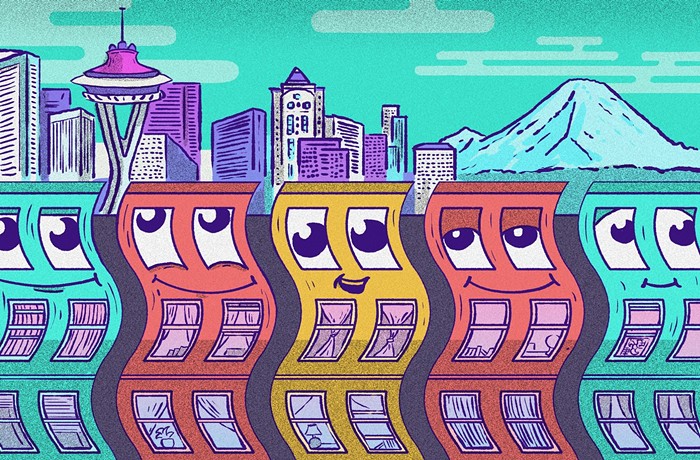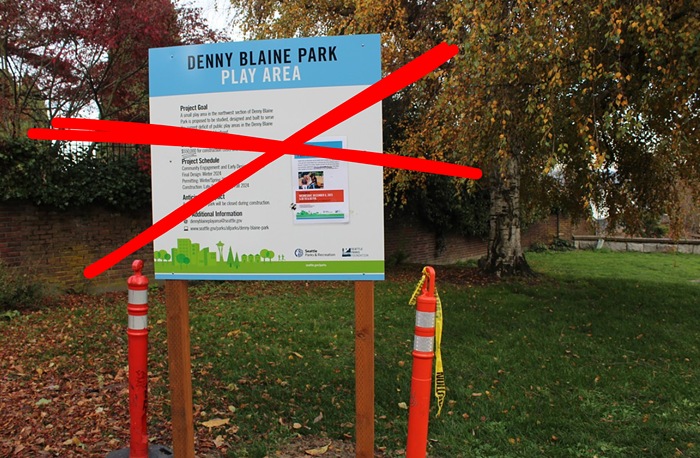
It's not just Seattle. Home prices are setting new records "an hour’s drive in every direction," Mike Rosenberg reports.
For the first time since before the recession, the entire central Puget Sound region—from Pierce to Snohomish and Kitsap counties—has set records for median home prices.... Monthly home-sales data released Tuesday show just how little escape there is for people priced out of the costly Seattle and Eastside markets. Pierce County’s median house cost topped $300,000 for the first time, while Kitsap County, which has similar home prices, surpassed its old bubble peak from 2007. And Snohomish County’s typical house is nearing half a million dollars. Seattle’s new median price for a single-family house is $729,000, an extra $7,000 from a month ago and up 13.7 percent from a year earlier, according to the Northwest Multiple Listing Service.
The culprit? Scarcity:
The Seattle metro area has led the nation in home-price increases for the last seven months, according to the Case-Shiller index.... The added frustration is the seemingly never-ending drop in the number of homes for sale. That’s driven up competition—making Seattle the city with the most bidding wars in the country.
I've urged anti-displacement activists to stop pranking and stop pretending that gentrification can be stopped and start making real, actionable demands instead. To address displacement—and to help people who've already been displaced—we should demand our elected officials speed the build out of our rapid transit system, create temporary and true BRT lines along the coming light rail routes, and massively subsidize fares. But transit alone isn't going to save us, as Rosenberg's piece in today's Seattle Times makes clear. We need rapid transit but we also need more housing, which I stated in my post but didn't hammer. Because what we have here is a regional supply and demand problem, a costly imbalance (too little housing for too many people), that's driving up home prices and rents. Building rapid transit lines out to neighborhoods and suburbs that are themselves becoming increasingly unaffordable isn't going to solve the problem. We need more transit and more housing.
Like I said in my post...
We haven't built enough housing to accommodate demand. Scarcity is driving up the value of the housing stock that already exists and people are being priced out and displaced.... Housing scarcity—exacerbated by the ridiculous amount of this city zoned for single-family housing—deserves as much blame for the displacement crisis as gentrification. More. And unlike gentrification ("a once in a lifetime tectonic shift in consumer preferences"), scarcity and single-family zoning are two things we can actually do something about. Rezone huge swaths of the city. Build more units of affordable housing, borrow the social housing model discussed in the Rick Jacobus' piece I quote from above ("Why We Must Build"), do away with parking requirements, and—yes—let developers develop.
The last thing we need now is a "pause" on development. People aren't being forced out because there's too much construction going on and too many new units of housing going up. People are being forced out because for too long we've had too little construction and too few new units of housing.
UPDATE: This graphic is depressing—but, hey, until 2009 Seattle would've been completely blank. Let's keep building light rail, let's build it faster, and let's add some more lines to Seattle's chunk of that graphic.
We’re working on it. pic.twitter.com/u277t3T66u
— David Cole, AIA (@DavidColeAIA) June 5, 2017
UPDATE 2: Right you are, Goldy, as always.
Millennials only have themselves to blame for not buying houses 20 years ago, amirite fellow homeowners? https://t.co/uqjxz7wtNb
— (((Goldy))) (@GoldyHA) June 7, 2017


















